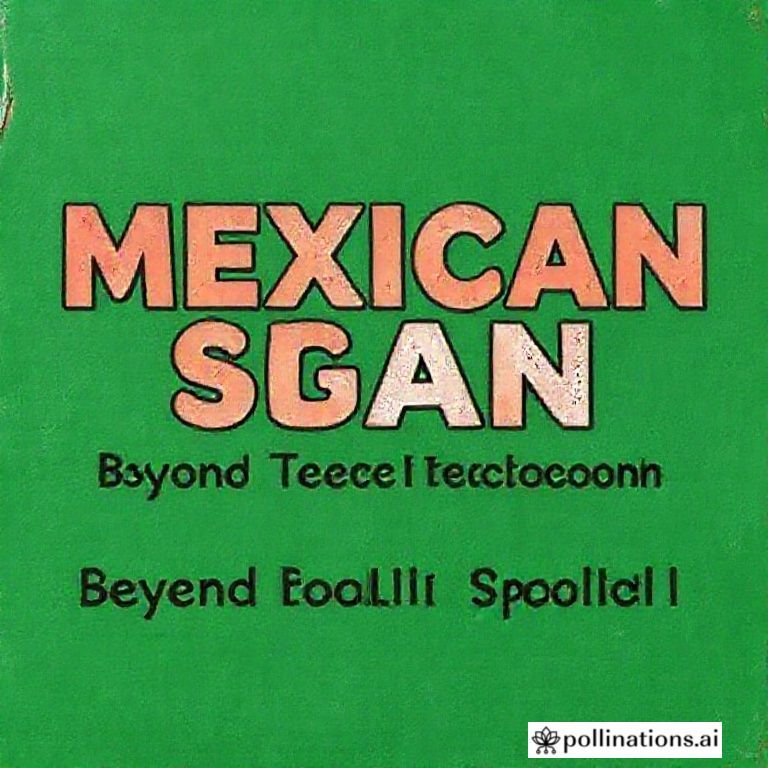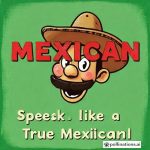Learning Spanish is an adventure, opening doors to vibrant cultures and fascinating conversations. But stepping outside the classroom and into the real world, especially in Mexico, can feel like entering a whole new language. That’s because textbook Spanish, while a solid foundation, often differs significantly from the everyday slang and colloquialisms used by native speakers. Understanding these differences is key to truly connecting with the Mexican people and experiencing the richness of their language.
Imagine spending months perfecting your grammar and vocabulary, only to be met with confused looks when you try to use your newly acquired skills in a casual conversation. Mexican slang, or “jerga mexicana,” is a lively and ever-evolving part of the language, reflecting the country’s history, humor, and regional variations. While formal Spanish provides the rules, slang injects personality and flavor into everyday communication.
The Core Differences Between Formal and Slang Spanish
The contrast between textbook Spanish and Mexican slang boils down to several key factors. Formal Spanish prioritizes grammatical correctness, standardized vocabulary, and a more reserved tone. Slang, on the other hand, embraces informality, creativity, and a willingness to bend the rules for the sake of expression.
Vocabulary Variations
- Word Choice: Slang often uses completely different words to express common concepts. For example, instead of “niño” (child), you might hear “chamaco” or “escuincle.”
- Modified Meanings: Existing words can take on new meanings in slang. The word “padre,” meaning father, can also mean “cool” or “awesome.”
- Regional Differences: Slang varies greatly from region to region within Mexico. A phrase common in Mexico City might be completely unknown in Guadalajara.
Grammatical Flexibility
Textbook Spanish emphasizes strict adherence to grammatical rules, including proper verb conjugations and sentence structure. Slang, however, often takes liberties with grammar, prioritizing ease of communication over perfect syntax. This can include:
- Omission of Pronouns: While formal Spanish requires pronouns in many instances, slang often omits them for brevity.
- Simplified Verb Conjugations: Slang might use a more simplified or common verb form, even if it’s not technically correct.
- Informal Sentence Structure: The word order in slang can be more flexible and less rigid than in formal Spanish.
Level of Formality
Perhaps the most significant difference lies in the level of formality. Textbook Spanish typically teaches a neutral or formal register, suitable for professional settings and interactions with strangers. Mexican slang, however, is reserved for informal settings, close friends, and family. Using slang in a formal situation could be seen as disrespectful or inappropriate.
Examples of Common Mexican Slang
To illustrate the differences, let’s look at some common examples of Mexican slang and their formal Spanish equivalents:
- ¿Qué onda?: (Formal: ¿Qué tal?) – What’s up?
- Chido/Padre/Cool: (Formal: Bien/Excelente) – Cool, awesome
- Híjole!: (Formal: ¡Ay!) – Wow!, Oops!
- Órale: (Formal: ¡De acuerdo!/¡Vamos!) – Okay!, Let’s go!
- Güey: (Formal: Amigo/Persona) – Dude, guy
These are just a few examples, and the world of Mexican slang is vast and ever-changing. Learning these phrases will not only help you understand conversations but also demonstrate your interest in and respect for Mexican culture.
How to Learn and Use Mexican Slang Effectively
Immerse Yourself in the Language
The best way to learn slang is through immersion. Watch Mexican movies and TV shows, listen to Mexican music, and engage in conversations with native speakers. Pay attention to the words and phrases they use, and don’t be afraid to ask for clarification if you don’t understand something.
Start with Basic Phrases
Don’t try to learn everything at once. Begin with a few common phrases and gradually expand your vocabulary. Focus on slang that is relevant to your interests and the situations you’re likely to encounter.
Be Mindful of Context
It’s crucial to be aware of the context in which you’re using slang. As mentioned earlier, slang is not appropriate for all situations. Consider your audience and the setting before using slang, and err on the side of caution if you’re unsure.
Don’t Overuse Slang
While incorporating slang into your speech can make you sound more natural and fluent, it’s important not to overdo it. Using too much slang can make you sound unnatural or even comical. Strive for a balance between formal Spanish and slang, and let the situation guide your word choice.
Conclusion
Understanding the differences between Mexican slang and textbook Spanish is essential for anyone who wants to truly master the language and connect with Mexican culture. By embracing the richness and creativity of slang, you can move beyond the classroom and engage in authentic, meaningful conversations. So, go ahead, dive into the world of “jerga mexicana,” and get ready to experience the Spanish language in a whole new way!
If you enjoyed this article, don’t forget to explore more inspiring stories on Life in Mexico!
IMAGE: A vibrant and lively street scene in Mexico City. The focus is on a group of young people laughing and talking animatedly. The background includes colorful buildings, street art, and bustling market stalls. The mood is cheerful and energetic, with warm, golden sunlight illuminating the scene. The style is realistic and documentary-like, capturing the authentic atmosphere of everyday life in Mexico.


